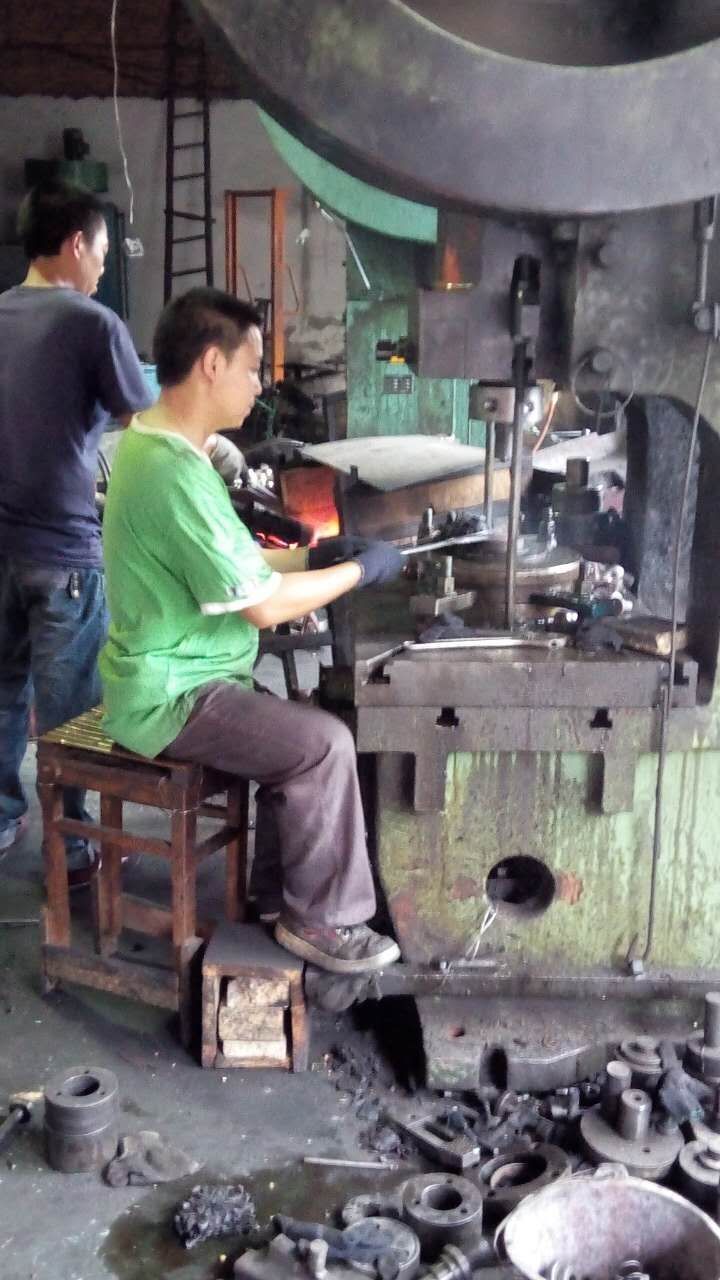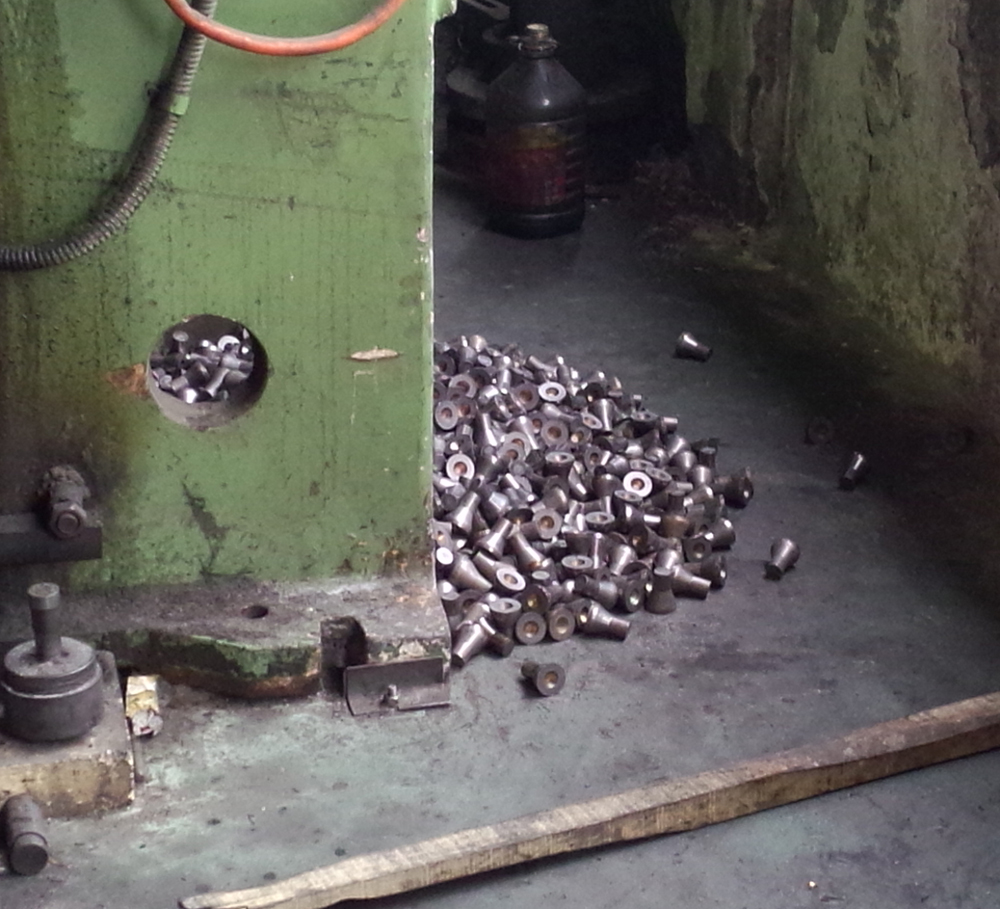DACO Industrial Co., Ltd. |
Chinese manufacturer of Hot forged brass fittings hot extrusion forgings hot pressing
Copper and brass forgings are quality parts, comparing favorably in material integrity, dimensional tolerance and surface finish with products made using other major metalworking processes. As a result of hot working, forged materials have superior density and freedom from flaws. Forming under heat and pressure in precise closed dies produces dimensional accuracy-always repeatable, part to part and lot to lot. Excellent surface finish with a clean lustrous appearance is readily available with copper and brass forgings.
This material will help design engineers and purchasing departments maximize the utility and cost advantages inherent in the specification of brass and copper forgings. It reviews competitive processes, comparing their advantages and disadvantages with forging. A a tabular guide to the tolerances commonly specified for forgings of different types is included. An extensive glossary of terms used in the industry and information required for ordering are included to improve communication between user and supplier.
Copper, brass and bronze forgings offer the designer unique combinations of properties that other metals cannot match. Alloys can be selected to utilize the following unique characteristics:
Forgings of copper and brass offer a number of outstanding advantages over parts produced by other manufacturing processes. These advantages result from the inherent properties of copper and copper alloys plus additional improvements in mechanical and physical properties imparted by the forging process.
In making a forging, the metal is worked twice under tremendous pressures-first during rod extrusion and then during forging. The double working under pressure compacts the metal and produces a very dense and refined grain or fiber structure.
The tensile strength of the parts is thereby increased, and resistance to impact and abrasion is enhanced.
The dense non-porous forged metal permits the designer to specify thinner sections without the risk of leaks due to flaws and voids. Often the thinner forged parts result in lighter weight and lower piece cost compared to other forming processes.
A forging produced in a steel die with close tolerances offers several advantages. Overall part dimensions are held closer than in sand casting. Dimensions show minimum variation from part to part and permit automatic chucking and handling in subsequent operations. The precise designs on the die surface can produce sharp impressions on the forging surface, which is not economical with other forming processes.
Mass production of forged parts lends itself to maximum savings. However, smaller quantities of copper alloy forgings can also prove economical when specific design problems must be solved. These problems include leak integrity, close tolerances, high strength with low weight, and non-symmetrical shape.

At the brass mill, billets cut from a cast ingot are hot extruded into rod which is further processed before delivery to the forge shop. There the rod is cut into slugs of precise length to insure filling the die cavity during forging.
The slugs are then heated to forging temperature. To insure a quality part, the forger must carefully control the slug temperature, as too cold a slug will not fill the die cavity completely whereas too hot a slug will result in a porous surface.
The dies are heated to insure proper metal flow, and the heated slug is placed in the lower half of the die cavity. With a downward stroke of the forging ram, the upper die is forced against the slug to form the part. Since copper and copper alloys are readily forged, most commercial forgings are produced with a single closing of the press, no re-strike or reheating being required. This permits the use of single cavity dies rather than the more expensive progressive dies required by hard-to-forge materials, and reduces labor costs, die costs, and heating costs. Forging rates vary between 100 and 1,200 pieces per hour with the majority of forgings being forged at 200 to 600 piece rates. Where quantities are large and the design is simple, considerable savings result from the use of multiple cavity dies, with more than one part being produced at a time.
It is during this process that the dense grain structure of the hot wrought extruded brass rod is further hot worked to assure a dense uniform product with excellent physical and mechanical properties. These superior properties frequently permit the use of forged parts which are lighter than those produced by other processes.
To insure complete filling of the die cavity, the weight of the forging slug slightly exceeds that required by the finished forging. To allow for this excess metal, a gutter or relief area is provided in the die surface surrounding the die cavity. During forging, the excess metal is extruded into the gutter as overflow or flash which is removed later in a trimming operation. Good forging die design keeps the amount of flash to a minimum for minimum scrap. Since the flash thickness varies with the ram pressure on the die, the amount of excess metal, the slug temperature when forged, and the die temperature, the flash thickness dimension customarily has twice the tolerance allowed for other dimensions of the part. Where tighter outside dimensions are specified, a close trimming operation known as shaving can be substituted.
During the forging process surface oxides form and the parts are coated with lubricants picked up from the dies. Both these surface layers are dissolved by dipping the parts in a series of special solutions. After the forgings are clean, they are generally dipped in a passivating bath to insure a clean surface for subsequent handling.
Due to the stringent requirements of the Environmental Protection Agency, some forging suppliers have substituted a steel ball tumbling operation for dipping to clean forgings.
The most common containers for bulk packaging are cardboard boxes. For better dent control during shipping, forgers have developed several improved packaging methods such as layering, nesting, and egg crate packaging, where each individual forging is in a separate compartment. These special packaging methods reduce shipping damage although they increase shipping costs slightly.

